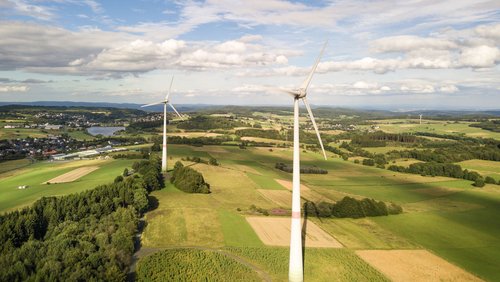The European Commission currently aims at boosting the green financial market by softening the capital requirements for green bonds. This could lead to a bubble, reports the German Economic Institute (IW) in a study. Instead of pushing for rapid growth, the EU should first focus on the planned uniform standards for green bonds.

Green Bonds: Clear criteria for a veritable market
Expanding renewable energy, promoting clean mobility or renovating buildings: protecting the environment costs a lot of money. Public funds alone are insufficient for reaching the defined climate targets. The EU therefore aims to increasingly use green bonds to finance environmental projects. However, only USD 157 billion of green bonds were issued worldwide last year. That is not much in comparison to the total outstanding volume of bonds in 2017 of more than USD 23 trillion. To finance the targeted annual climate-related total investments of up to USD 7 trillion, green bond issuance would have to increase by a factor of 45. Just to cover additional investments required to meet the climate targets, 4.5 times more green bonds would have to be emitted annually.
To further strengthen green investments, the European Commission plans to soften the capital requirements for banks through a green supporting factor. So far, when banks acquire, for example, green bonds, they need to have just as much equity capital available to back green bonds for unexpected losses as for conventional bonds. This is now set to change as for green bonds lower capital requirements shall apply.
A special treatment of the green bonds, however, can lead to an imbalance in the financial market and a speculative bubble, warns the German Economic Institute. If this bubble bursts, this would not only be detrimental for the financial sector - climate targets would also be more difficult to achieve, as many investors would not invest money in environmental projects if they had previously lost money.
Instead of relying on rapid growth in the green bond market, the EU should strive for organic growth and rely on market forces. It should therefore not soften the capital requirements. Instead it should confine itself to setting the same standards for green bonds. “Green bonds can only be traded internationally, if there is a uniform set of rules governing what lies behind green bonds,” explains IW financial expert Markus Demary. To this end, the EU Commission must define clear criteria as to what a Green Bond is and into which projects the collected funds are allowed to be invested. "In addition to renewable energy and clean mobility projects, these can be investments in biodiversity or sustainable waste management," says IW environmental economist Adriana Neligan.
Markus Demary / Adriana Neligan: Are Green Bonds a Viable Way to Finance Environmental Goals? An Analysis of Chances and Risks of Green Bonds
IW-Report
More on the topic

Compendium 5.5: CO2 Regulation of Road Transport in Europe
With the Compendium CO2 Regulation in Europe, the IW has been providing the interested public with a comprehensive collection of data on the development of CO2 emissions from passenger car traffic in the European Union, as well as on the applicable regulatory ...
IW
Financing the Sustainability Agenda
The EU has set legally binding targets for climate-neutrality by 2050. To succeed in the transition to a low-carbon economy, companies need to continuously develop new and improved climate-friendly technologies, and to adopt or move towards low-carbon business ...
IW